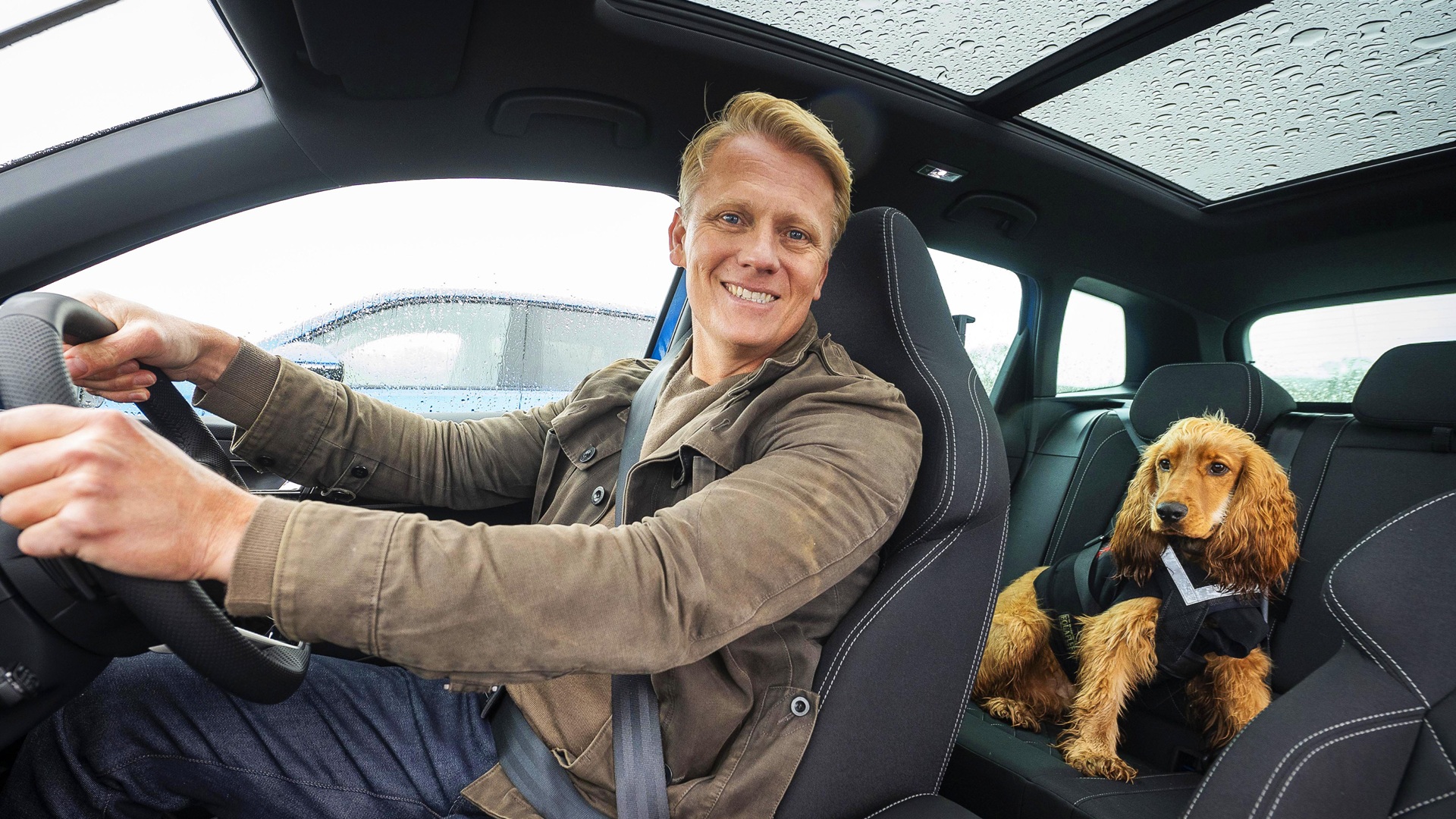

Volkswagen-owned Škoda claims it’s made a scientific breakthrough with a car and a Cocker Spaniel. Enlisting a celebrity vet armed with a heart rate monitor, the automaker has concluded that Mango the dog prefers electric cars to ones powered by pistons. The company notes that the dog was “more relaxed” in the EV.
Škodas aren’t sold in America, but they’re quite common in Europe. It’s a Czech brand that’s been building cars since 1905.
The study was carried out with the help of Dr. Scott Miller, a veterinarian and television personality in the United Kingdom. He grabbed Mango, his Cocker Spaniel, borrowed three new cars powered by electricity, gasoline, and diesel, respectively, from Škoda, and hit the former Top Gear test track in England at speeds of up to 70 mph. Miller monitored Mango’s behavior during the drive and checked his pulse after each run.
Mango couldn’t be interviewed, but Škoda tells us the results speak for themselves. The dog has a resting heart rate of 80 beats per minute (bpm). That number rose to 100 bpm in the EV, 120 bpm in the gasoline-powered car, and 125 bpm in the diesel, and the brand says that the higher numbers correspond to higher stress levels. How do we know that Mango, who looks like a good boy, wasn’t simply excited? Well, Škoda adds that Mango “appeared to be more relaxed” in the EV and nearly fell asleep. He was “more distracted and less settled” in the other cars.
“The experiment clearly shows the health and psychological benefits of traveling in an EV for dogs. Observing Mango’s reactions while traveling at the same speed on the same track, but in different vehicles, made it clear that the EV provided a smoother and more calming experience,” Miller concluded. He also cited the “spacious interiors of electric vehicles” as a factor that helps dogs feel more relaxed when they’re in a car.
Anna Webb, a dog behaviorist, added that the smoother electric drivetrain helped keep Mango’s stress level down. Most electric cars don’t have a transmission, so there are no gear changes, and a motor makes less noise than an engine. She pointed out that the average dog has a hearing that’s four times more acute than a human’s, so it can hear sound frequencies that you can’t, and that engine vibrations cause motion sickness.
Reproducibility, a major part of the scientific method, seemingly wasn’t taken into account; Mango was the only canine participant. It makes sense that an animal would be more relaxed in a quieter environment. And measuring heart rate is more empirical than some of the canine-car testing we’ve done here at The Drive. But we might need to poll more pooches to get a definitive understanding of their preferred powertrains.
My eight-year-old cat, Kiki, tells me he prefers hydrogen. Bramble, our Canine Correspondant in New York, happily rides in everything from EVs to old tractors
Škoda has a little history doing dog-related marketing stunts, including creating a “Happy Hounds” Spotify playlist for road-tripping with dogs and canine-specific seatbelts.
Got tips? Send ’em to tips@thedrive.com